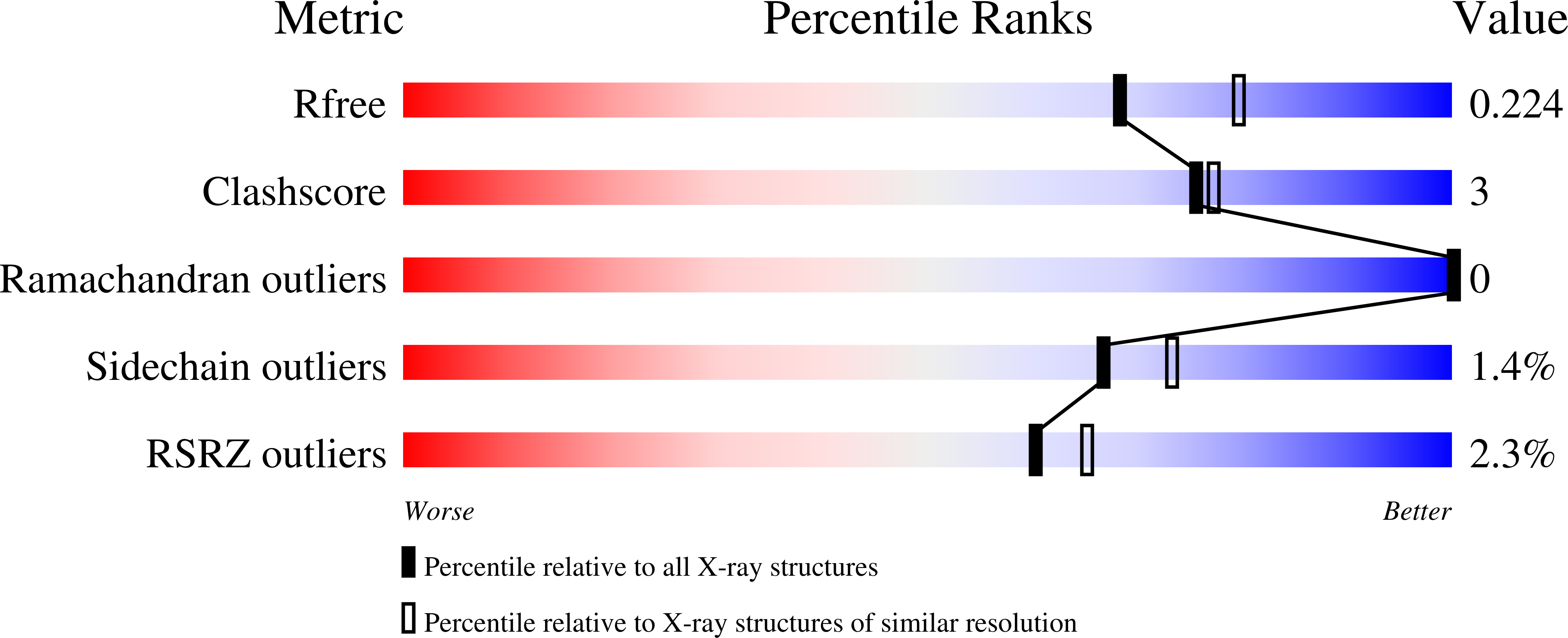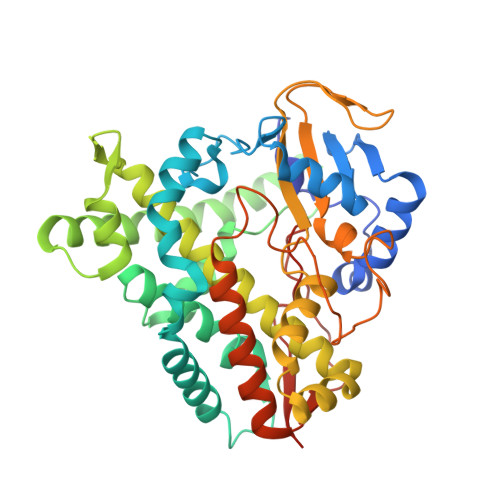Regio- and stereoselective steroid hydroxylation by CYP109A2 from Bacillus megaterium explored by X-ray crystallography and computational modeling.
Jozwik, I.K., Bombino, E., Abdulmughni, A., Hartz, P., Rozeboom, H.J., Wijma, H.J., Kappl, R., Janssen, D.B., Bernhardt, R., Thunnissen, A.W.H.(2023) FEBS J 290: 5016-5035
- PubMed: 37453052
- DOI: https://doi.org/10.1111/febs.16906
- Primary Citation of Related Structures:
8ABR, 8ABS - PubMed Abstract:
The P450 monooxygenase CYP109A2 from Bacillus megaterium DSM319 was previously found to convert vitamin D3 (VD3) to 25-hydroxyvitamin D3. Here, we show that this enzyme is also able to convert testosterone in a highly regio- and stereoselective manner to 16¦Â-hydroxytestosterone. To reveal the structural determinants governing the regio- and stereoselective steroid hydroxylation reactions catalyzed by CYP109A2, two crystal structures of CYP109A2 were solved in similar closed conformations, one revealing a bound testosterone in the active site pocket, albeit at a nonproductive site away from the heme-iron. To examine whether the closed crystal structures nevertheless correspond to a reactive conformation of CYP109A2, docking and molecular dynamics (MD) simulations were performed with testosterone and vitamin D3 (VD3) present in the active site. These MD simulations were analyzed for catalytically productive conformations, the relative occurrences of which were in agreement with the experimentally determined stereoselectivities if the predicted stability of each carbon-hydrogen bond was taken into account. Overall, the first-time determination and analysis of the catalytically relevant 3D conformation of CYP109A2 will allow for future small molecule ligand screening in?silico, as well as enabling site-directed mutagenesis toward improved enzymatic properties of this enzyme.
Organizational Affiliation:
Biotransformation and Biocatalysis, Groningen Biomolecular Sciences and Biotechnology Institute, University of Groningen, The Netherlands.


















